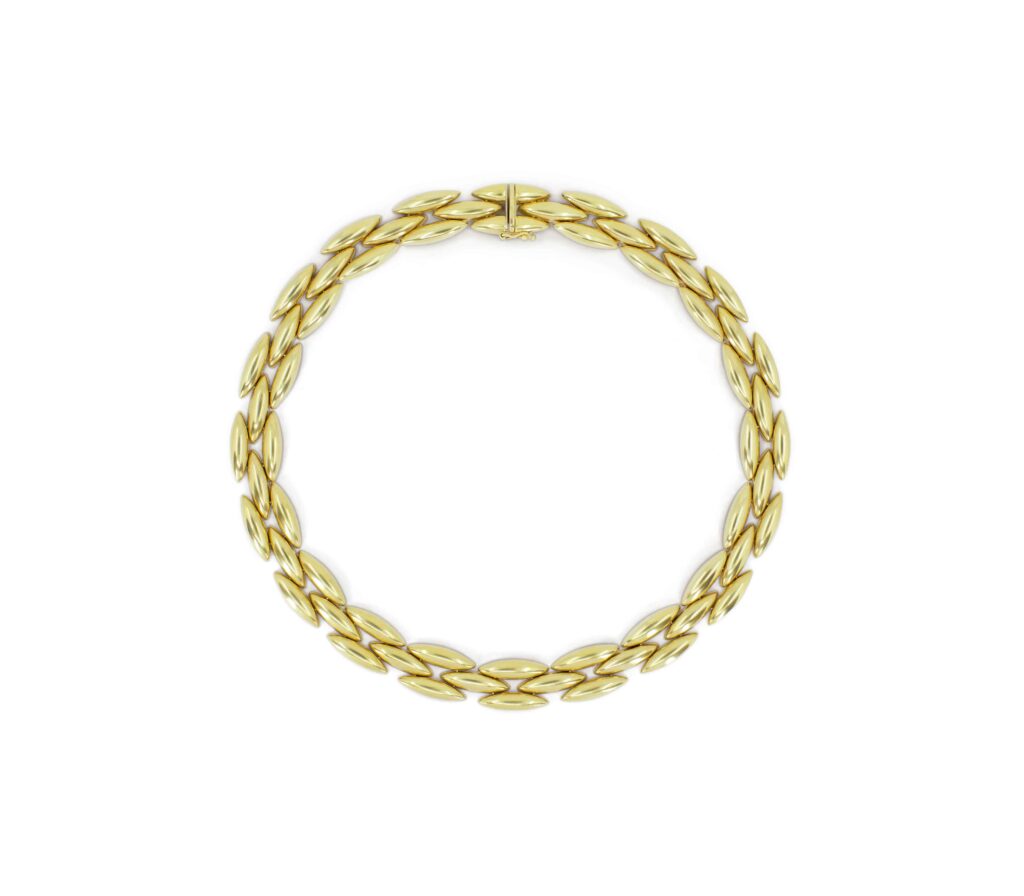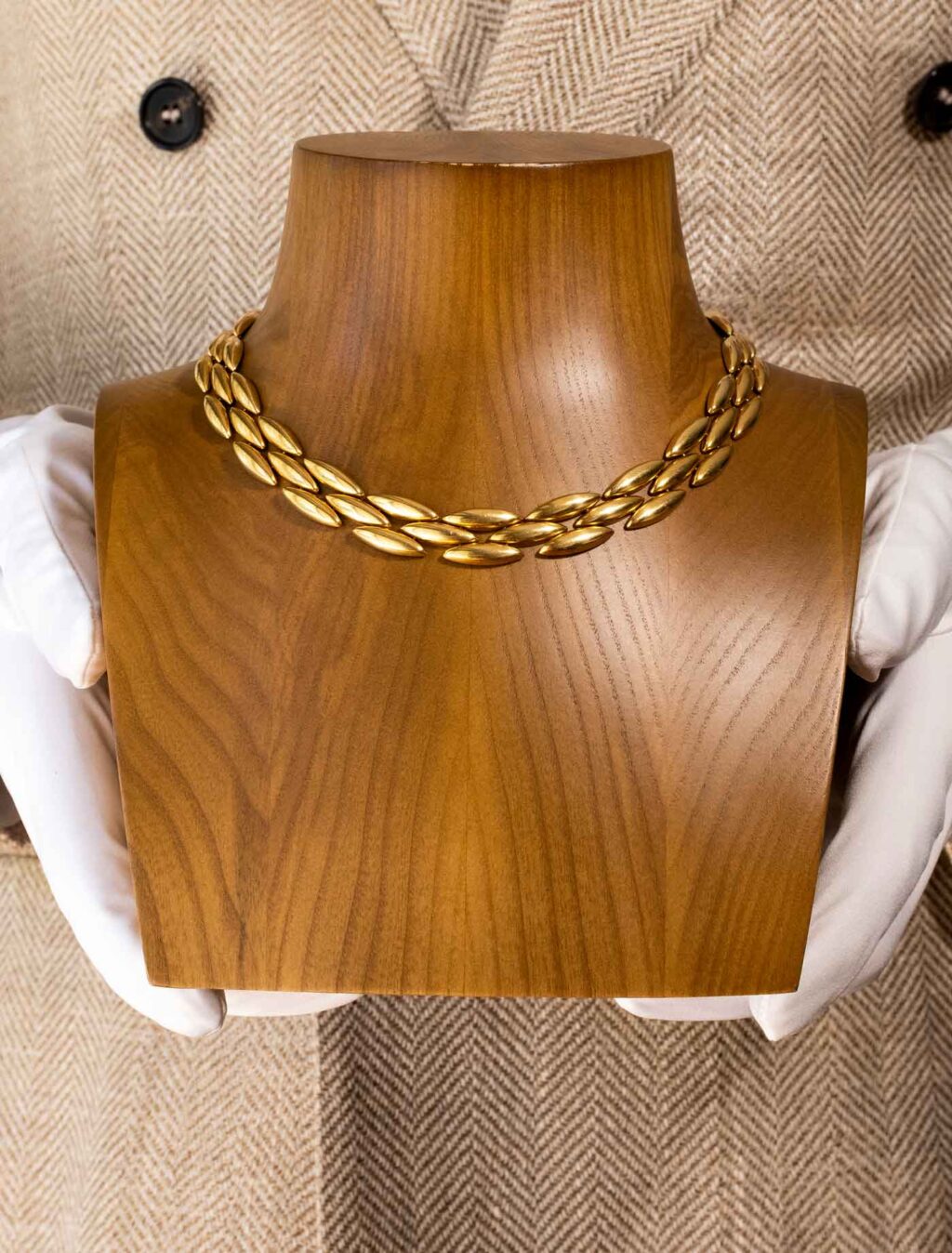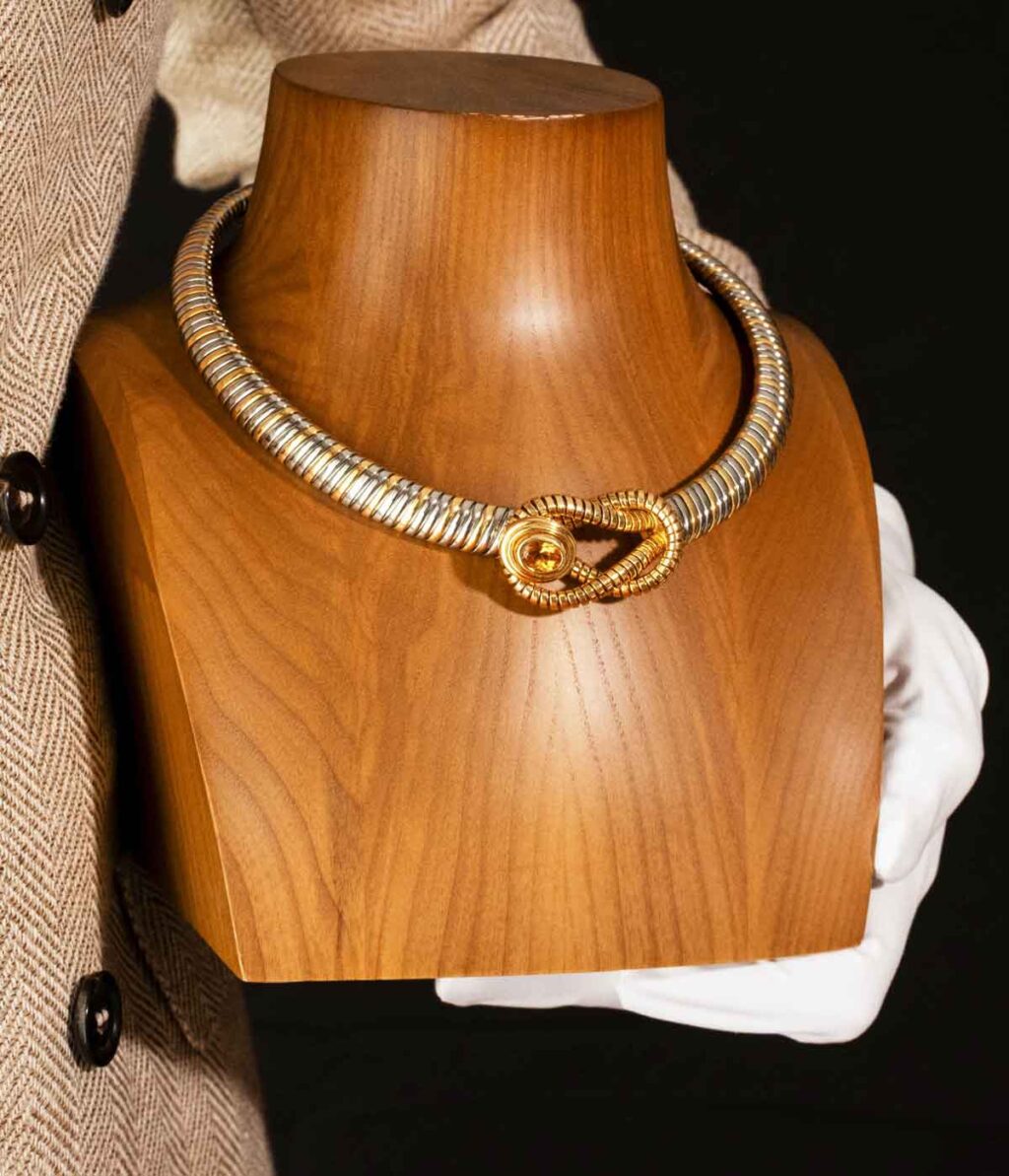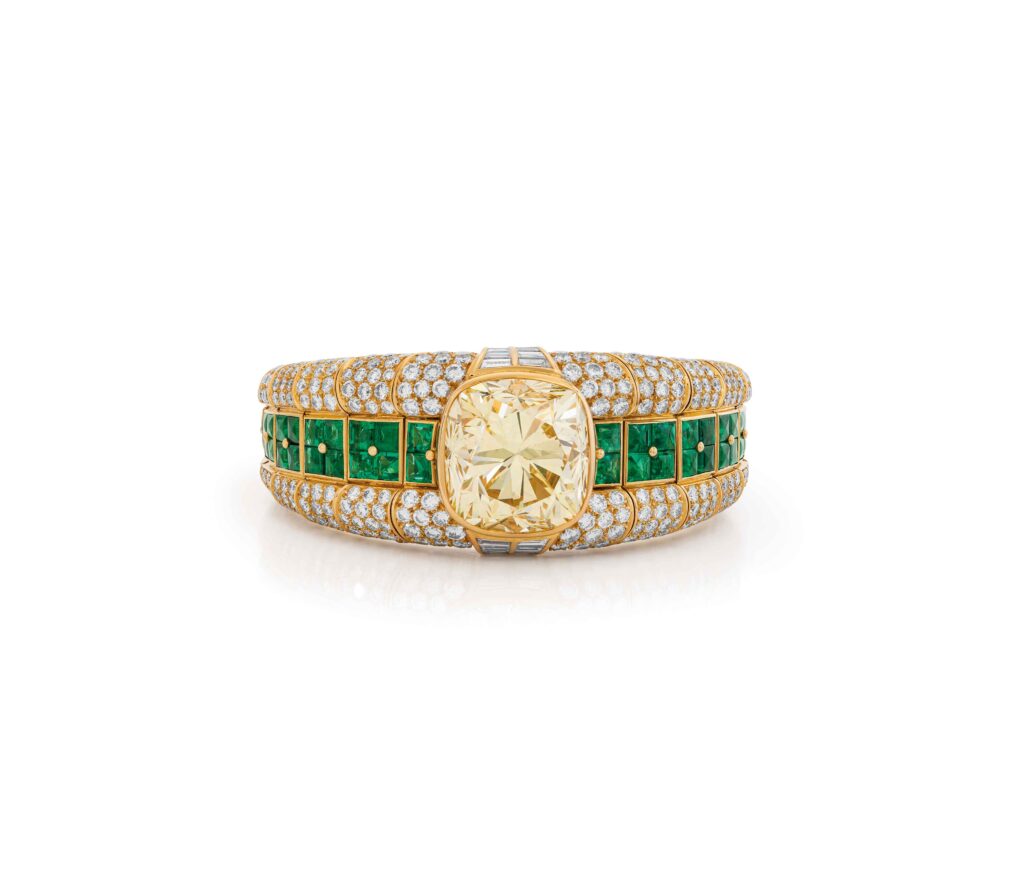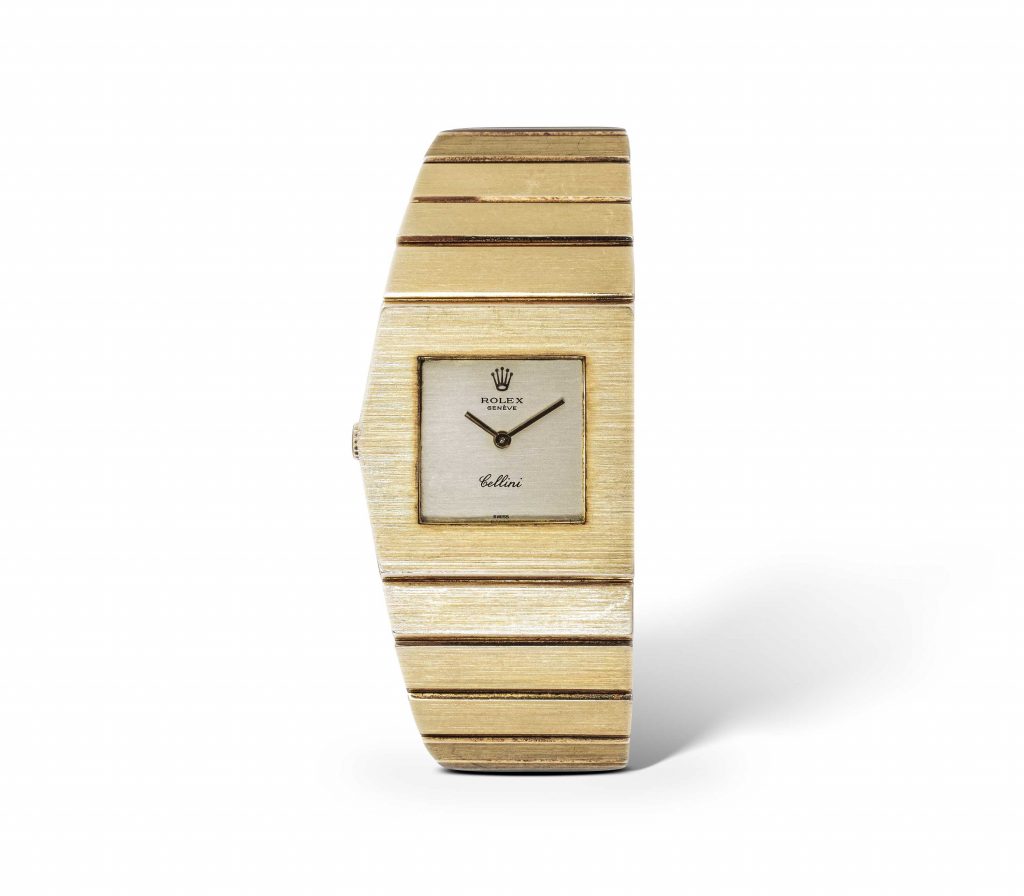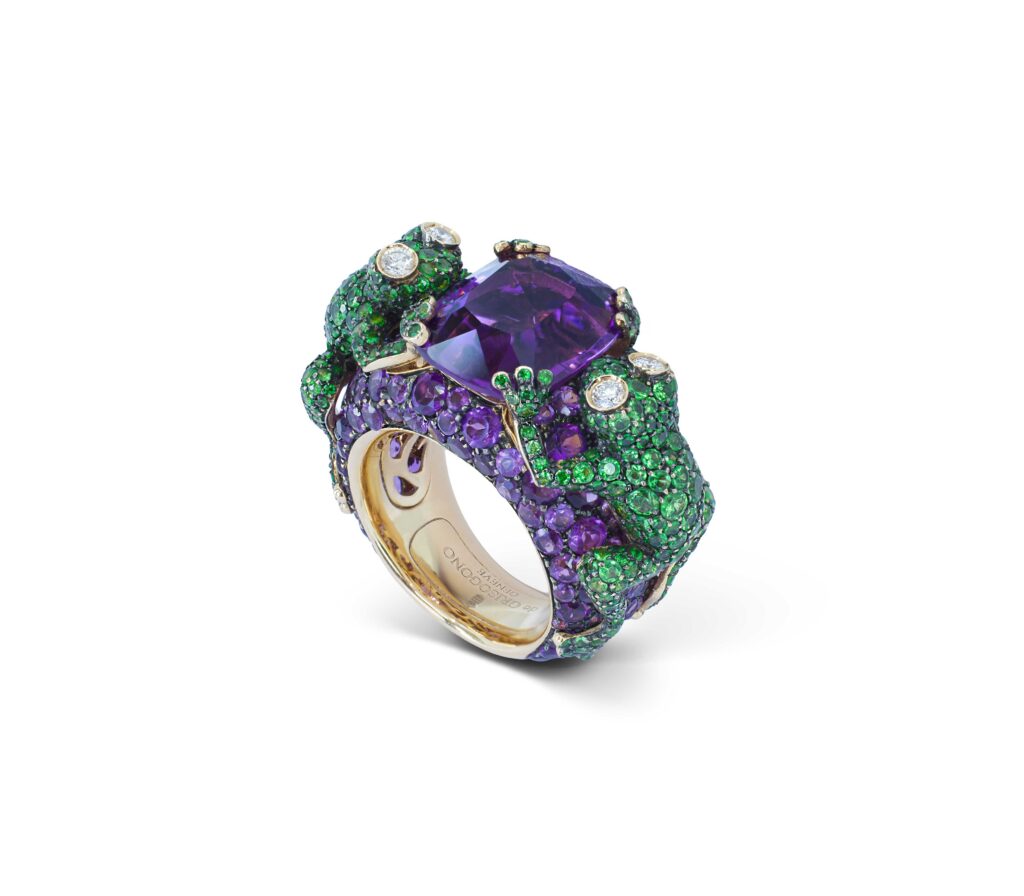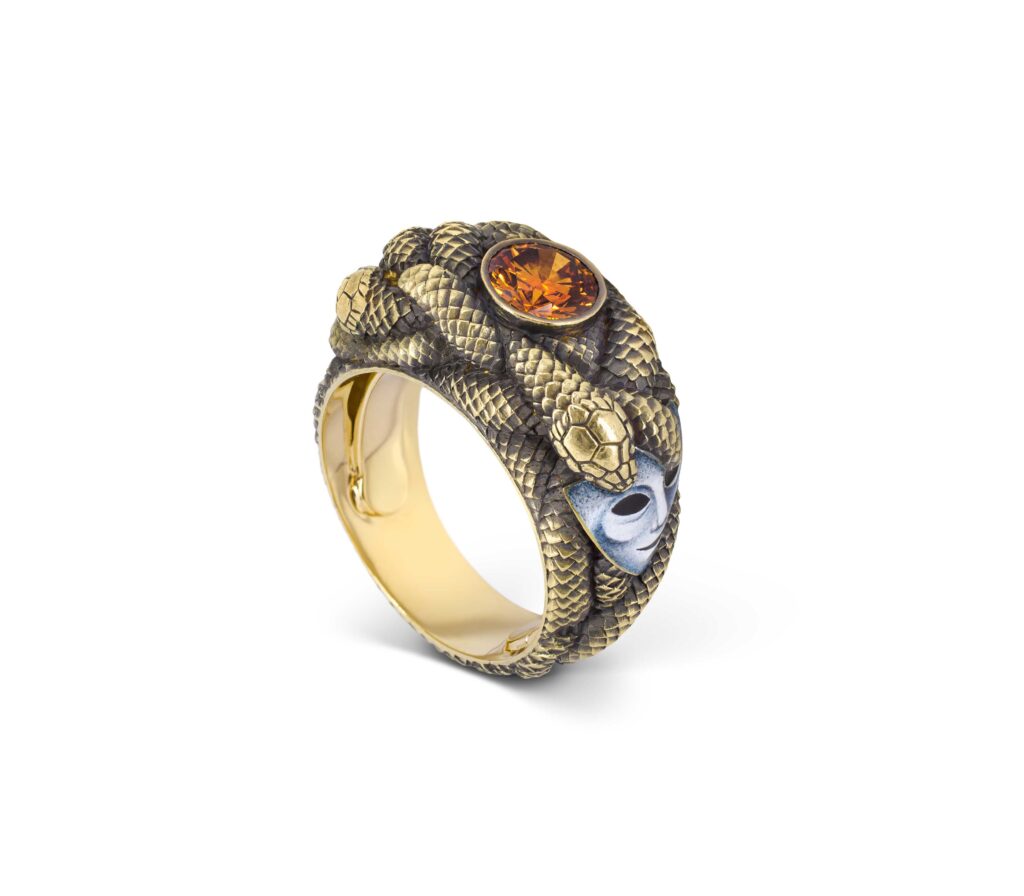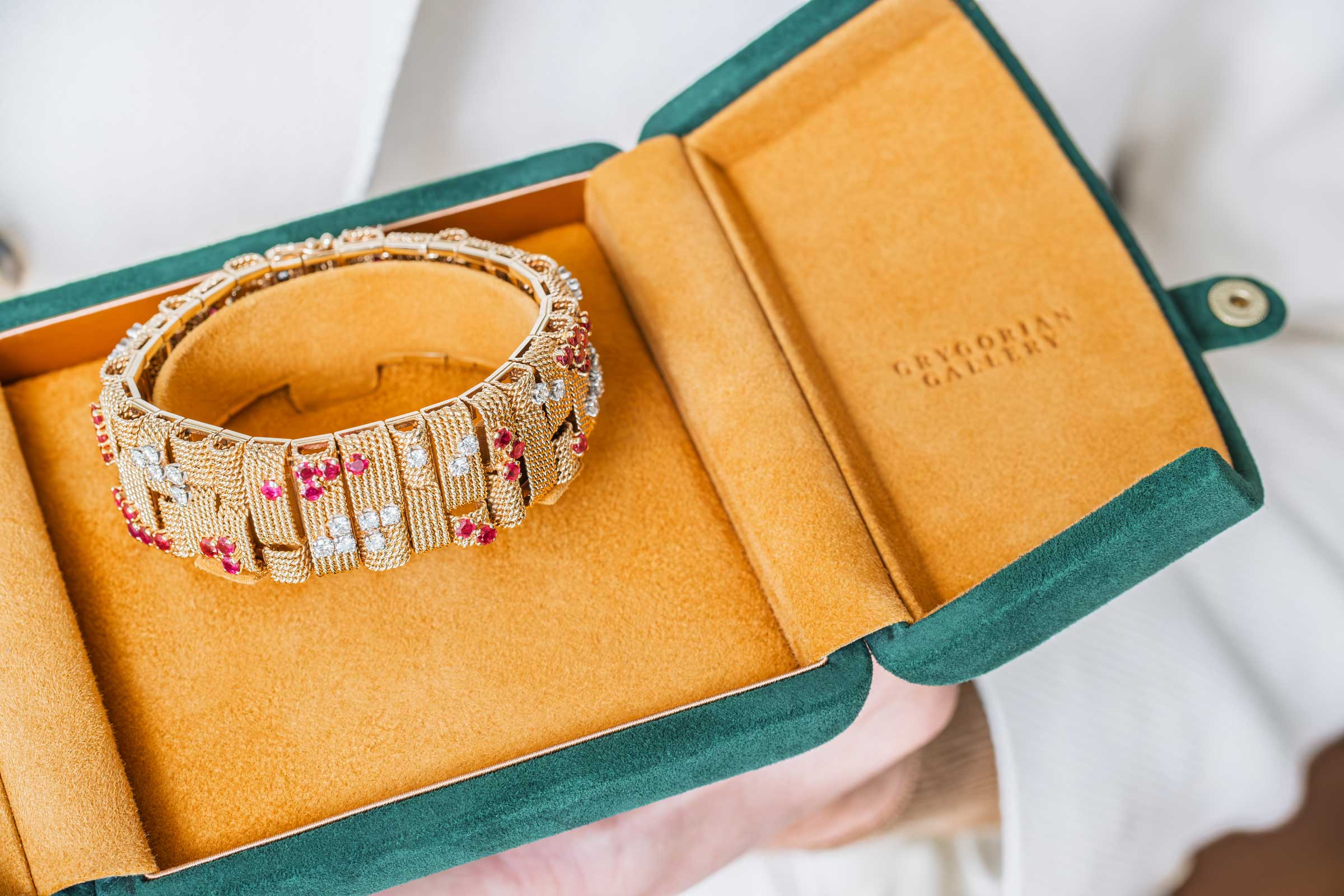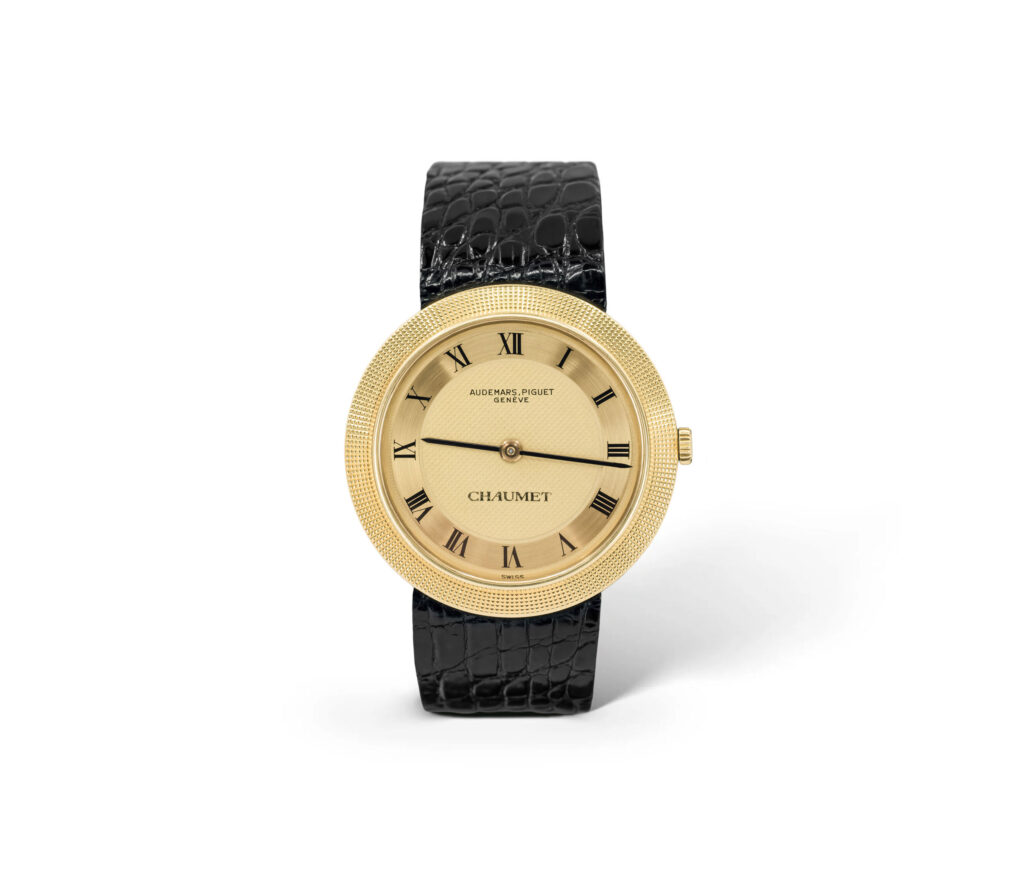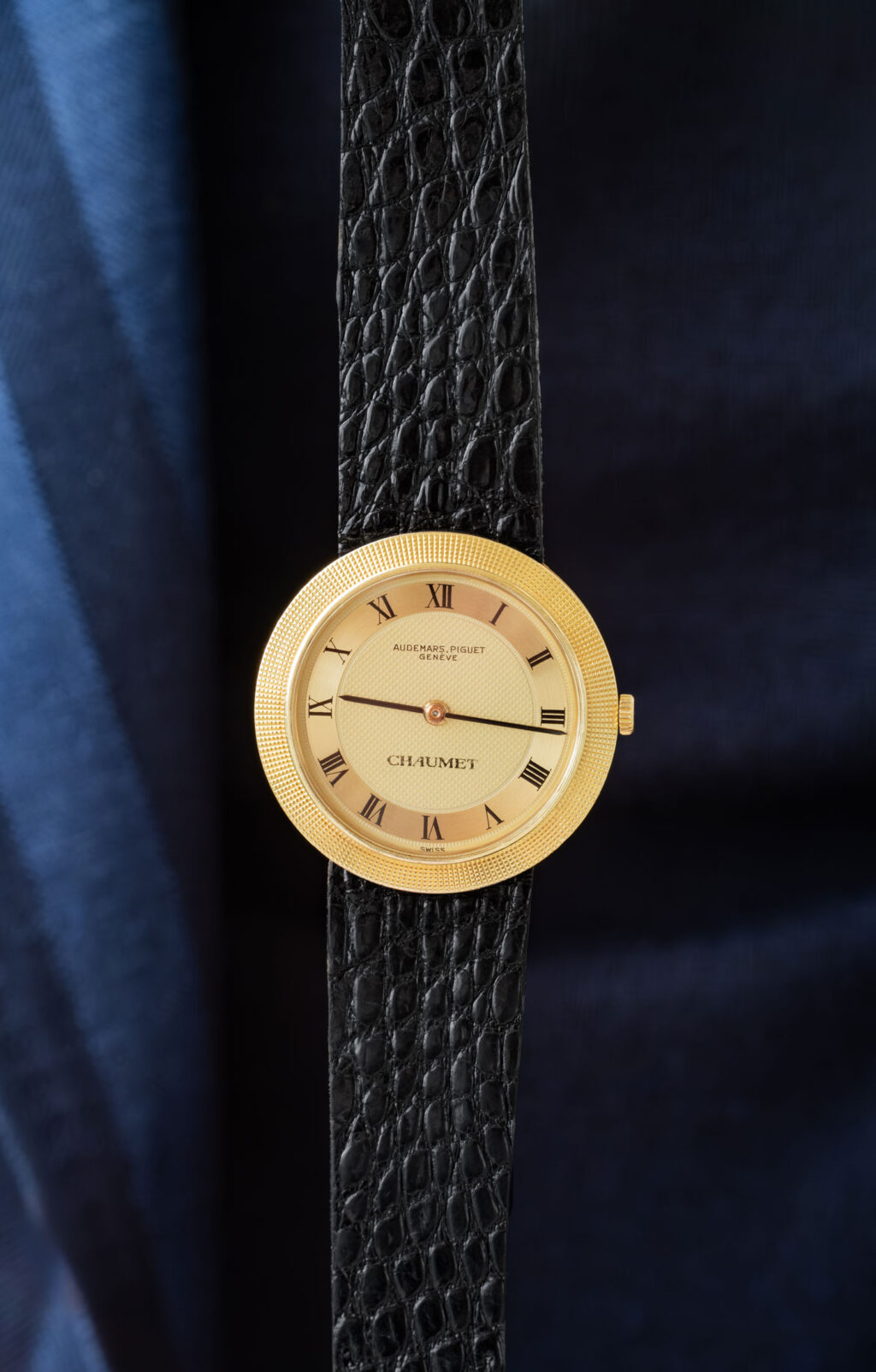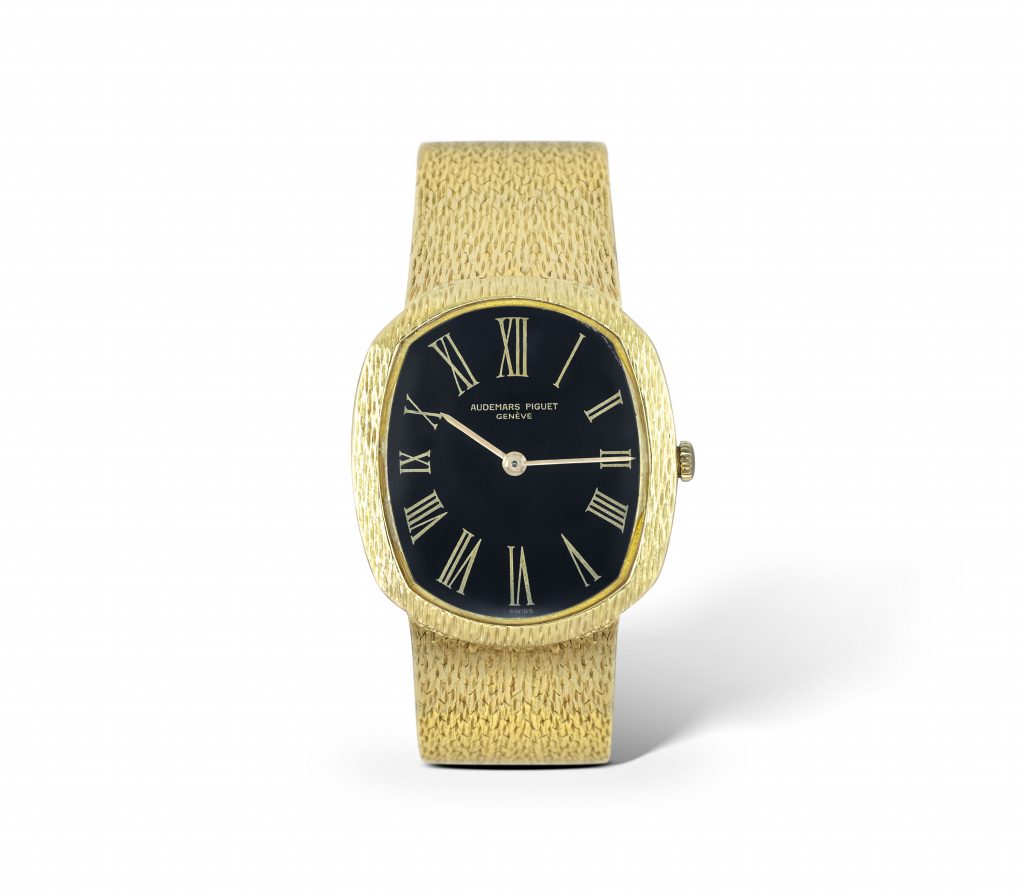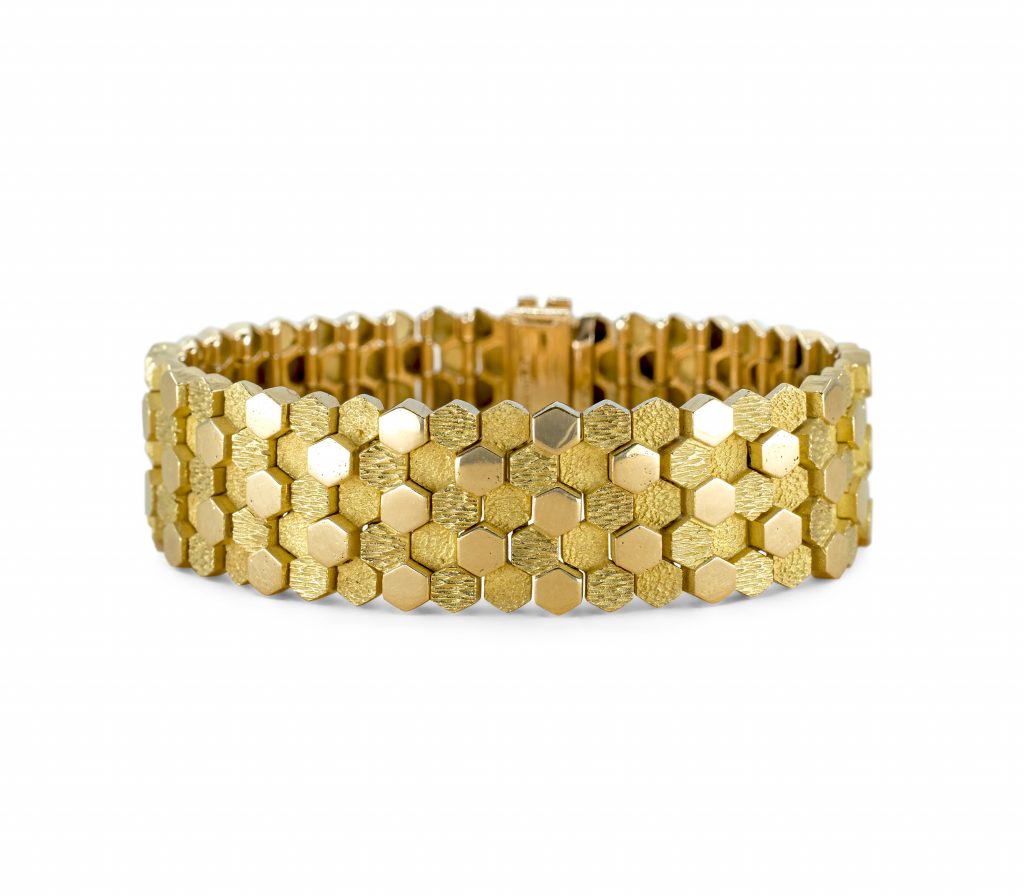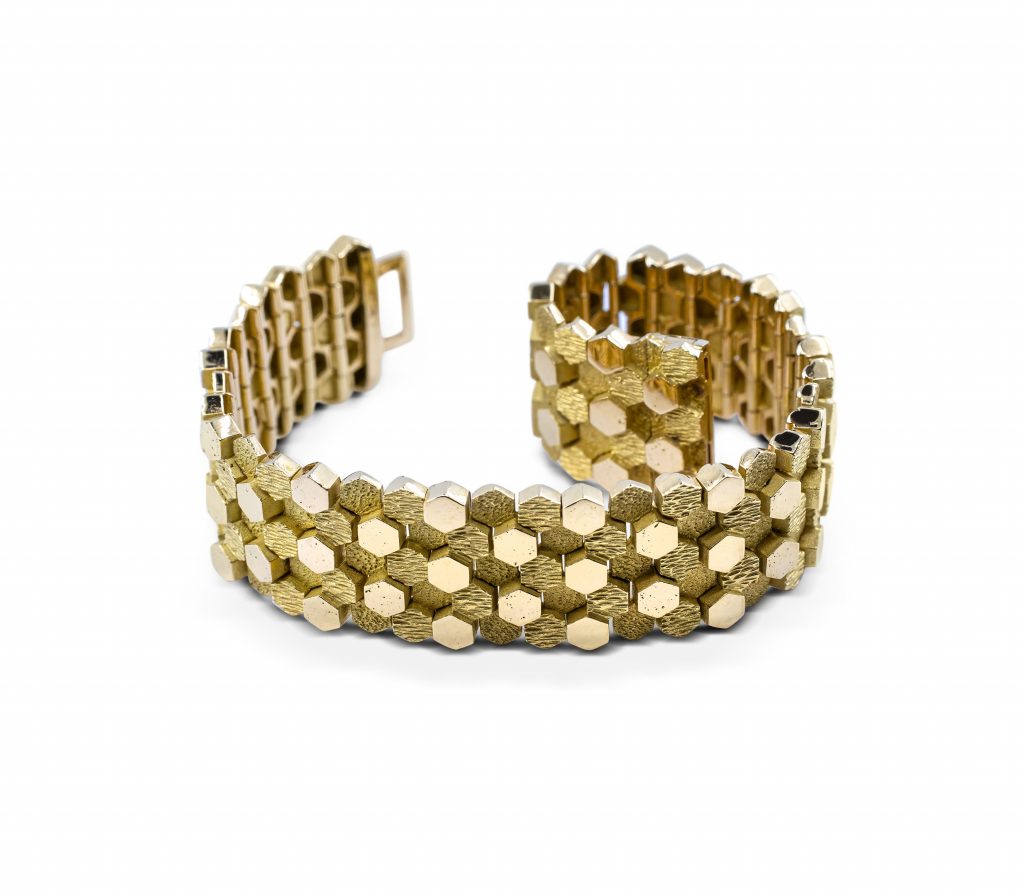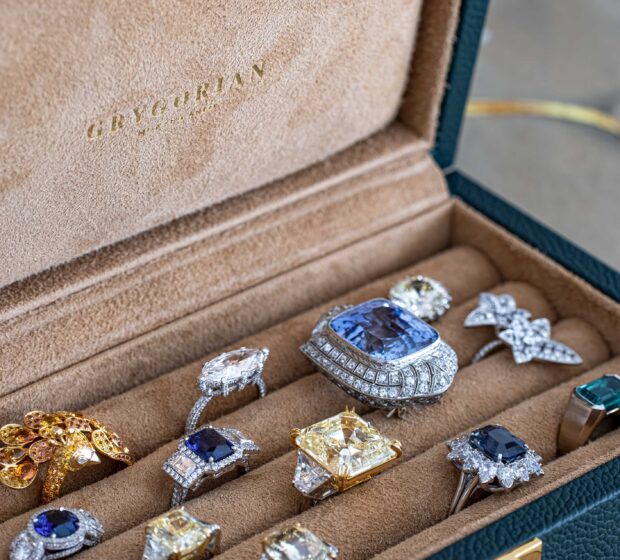I. Prologue: The Whisper of a Decade
There are decades that pass quietly, their stories fading into the fabric of time. And then there are decades that sing—a melody so distinct, so resonant, that its echoes linger for generations. The 1970s was such a decade. It was a time when the world, weary of conformity and industrial sameness, turned its gaze inward and backward, seeking the authenticity of the handmade, the poetry of the eclectic, and the freedom of the Bohemian spirit.
For those of us who live and breathe the artistry of high jewelry, vintage watches, gemstones, and diamonds, the 1970s is not merely a chapter in history—it is a living, breathing muse. At Grygorian Gallery, we honor this era not only as curators of its treasures but as storytellers, weaving its legacy into every facet, every dial, every glimmering stone.
II. The Bohemian Renaissance: A Cultural Awakening
Amid this cultural awakening, creativity flourished in every corner of life, with 1970s vintage jewelry exemplifying the era’s innovative spirit. Music, fashion, and art became vehicles for self-discovery and collective expression. The Bohemian Renaissance was not just about aesthetics—it was a movement rooted in authenticity and a hunger for connection. People sought out the imperfect, the handmade, the storied. Vintage shops and flea markets became sanctuaries, places where the past could be rediscovered and reimagined.
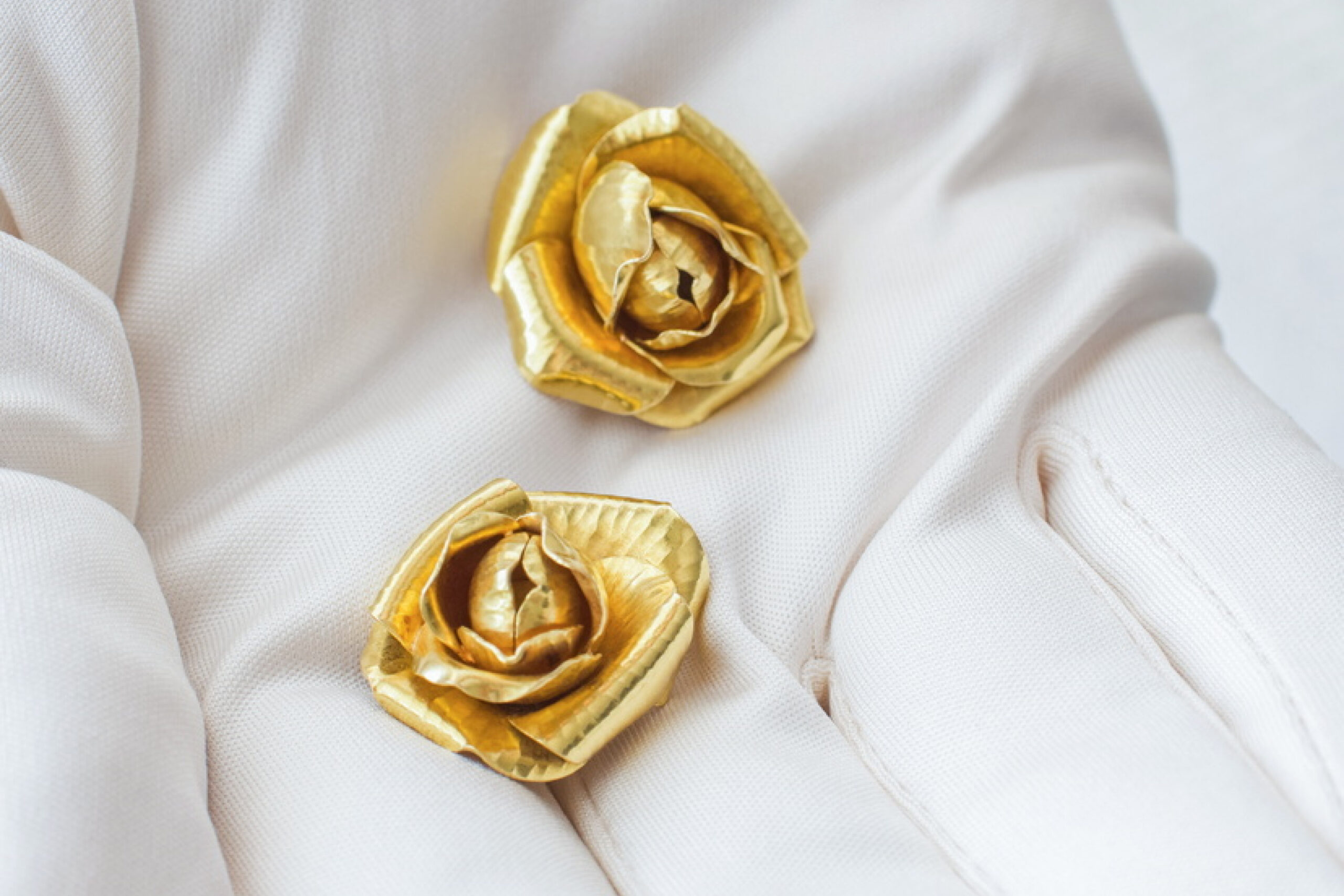
Communities formed around shared ideals of freedom, artistry, and inclusivity. Artists, musicians, and free spirits gathered in lofts, gardens, and sunlit studios, exchanging ideas and inspiration. The lines between creator and collector dissolved, as everyone became both muse and maker. The era’s jewelry reflected this ethos: bold, unconventional, and deeply personal. Pieces were layered and mismatched, each one a testament to the wearer’s journey and vision.
This renaissance was also a celebration of diversity. The Bohemian spirit thrived on the fusion of cultures, drawing from global traditions to create something entirely new. It was an era of open-mindedness and curiosity, where the world’s treasures were not just admired, but embraced and transformed. The Bohemian Renaissance invited all to participate in the dance of creativity, to find meaning in the mix, and to celebrate the beauty of a life lived with intention and imagination.
III. The Return of Handmade Craft: Artistry Over Industry
This revival of craftsmanship was a quiet revolution, a turning away from the anonymous and the disposable in favor of the meaningful and the enduring. The Bohemian 1970s celebrated the artisan’s mark—the subtle irregularities, the unique textures, the evidence of human touch that made each creation one-of-a-kind. Jewelry became a bridge between generations, a way to honor tradition while embracing innovation.
Collectors and connoisseurs sought out pieces that bore the imprint of authenticity. They valued the slow process of creation, the careful selection of materials, and the artistry that transformed raw elements into wearable poetry. Workshops and studios buzzed with renewed energy, as master craftsmen passed down their secrets to eager apprentices, ensuring that ancient techniques would not be lost to time.
At Grygorian Gallery, we honor this legacy by curating works that celebrate both heritage and individuality. Our collection is a living archive of artistry—each piece a dialogue between past and present, between maker and wearer. In a world that often rushes toward the next new thing, we invite you to pause, to appreciate the beauty of the handmade, and to discover the profound connection that comes from wearing something crafted with intention, skill, and heart.
IV. Eclectic Influences: The World as a Palette
The Bohemian 1970s was a feast of influences. The era’s jewelry and watches drew inspiration from every corner of the globe, creating a visual language that was at once ancient and utterly modern. This was a time when boundaries dissolved and creativity flourished, as artisans and designers embraced the world’s diversity and wove it into their craft. Each piece became a passport, a tangible reminder of the era’s insatiable curiosity and its celebration of individuality.
1. Eastern Mystique
The allure of the East was irresistible. Designers borrowed motifs from Persian miniatures, Mughal architecture, and Japanese woodblock prints. Cloisonné enamel, intricate inlay, and vibrant gemstones—lapis lazuli, coral, jade—became signatures of the era. The result was jewelry that felt both exotic and familiar, a bridge between worlds. These pieces shimmered with stories of distant lands, inviting the wearer to dream beyond the horizon and embrace the poetry of the unknown. The Eastern influence brought a sense of mystery and refinement, infusing each creation with a quiet, contemplative beauty.
2. Tribal Reverence
There was a reverence for the tribal, the primal, the elemental. African beadwork, Native American silver and turquoise, and the bold geometry of Aztec patterns found their way into necklaces, cuffs, and rings. These pieces of jewelry spoke of journeys—both literal and spiritual—and of a connection to the earth that transcended fashion. They celebrated the raw power of nature and the wisdom of ancient cultures, reminding wearers of their place in a vast, interconnected world. The tactile quality of these designs—rough-hewn stones, hand-forged metals—brought a sense of grounding and authenticity, making each piece a talisman of strength and belonging.
3. European Heritage
Yet, for all its wanderlust, the Bohemian 1970s never lost sight of its European roots. The grandeur of Victorian and Edwardian jewelry was reimagined through a modern lens. Cameos, lockets, and ornate brooches were paired with denim and suede, creating a dialogue between past and present. This fusion honored tradition while embracing the spirit of reinvention, allowing classic motifs to shine anew in unexpected contexts. The result was a style that felt both nostalgic and daring, a testament to the enduring allure of heritage and the endless possibilities of creative expression. European influences lent a sense of romance and history, enriching the Bohemian aesthetic with layers of meaning and memory.
4. The Watch as a Canvas
Watches, too, became canvases for eclectic expression. Dials bloomed with color; cases were engraved, enameled, or set with stones. The era’s most coveted timepieces were not merely instruments of precision—they were jewelry and wearable works of art, each telling a story as unique as its wearer.
Among these remarkable statement pieces, the Piaget Ultra Rare 18k Solid White Gold Vintage Watch with its cabochon sapphire crown stands as a true testament to refined elegance. This model is more than a watch—it is an allegory of exquisite taste, a harmonious blend of sophistication and artistry. The luminous white gold case radiates understated luxury, while the sapphire cabochon crown adds a touch of regal allure, catching the light with every movement.
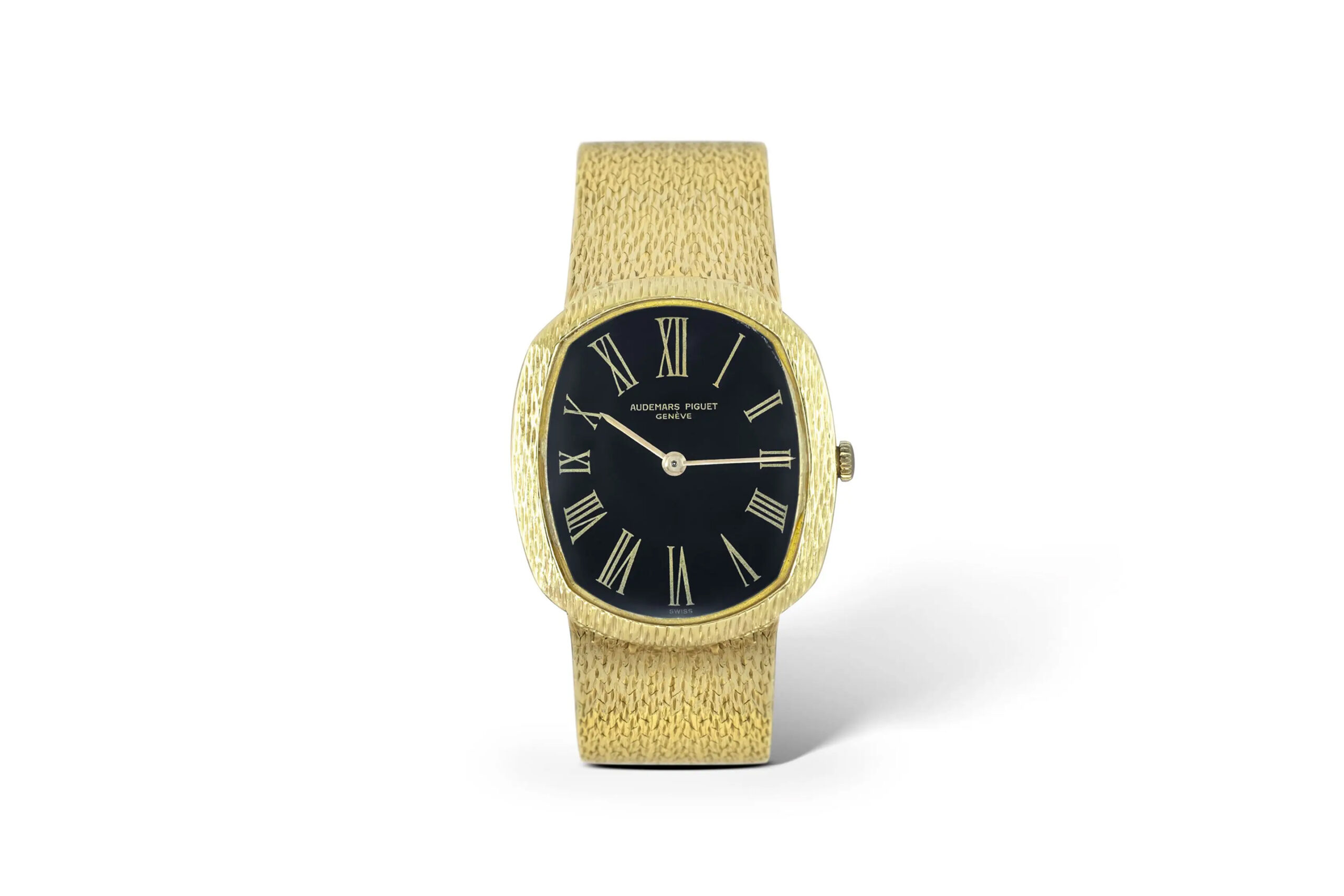
Every detail of this watch speaks to a discerning eye and a love for the extraordinary. Its graceful lines and balanced proportions make it a perfect choice for those who appreciate charm that is both subtle and captivating. Wearing this Piaget is not simply about keeping time; it is about celebrating the art of living beautifully, about carrying a piece of timeless grace on your wrist. For the collector or the connoisseur, it is an invitation to embrace elegance in its purest form.
V. The Language of Materials: Gems, Metals, and Meaning
The Bohemian 1970s was an era of material poetry. Gold was warm and matte, often hammered or brushed to a soft glow. Silver, once relegated to the background, took center stage in jewelry, its cool luster a perfect foil for vibrant stones. Platinum and palladium, rare and precious, whispered of luxury without ostentation.
Gemstones were chosen not merely for their value, but for their story. Turquoise, with its sky-blue promise of protection. Amber, golden and ancient, holding the memory of forests long vanished. Moonstone, opal, and labradorite—stones that seemed to hold the very light of the cosmos. Diamonds, of course, remained eternal, but they were often set in unconventional ways, paired with colored gems or nestled in organic, sculptural settings.
VI. The Persona of the Bohemian Collector
To collect Bohemian 1970s vintage jewelry and watches is to embrace a persona—a way of seeing and being in the world. The Bohemian collector is a seeker, a storyteller, a curator of beauty and meaning. They are drawn to pieces that speak of journeys, of cultures encountered and memories made. For them, jewelry is not a status symbol, but a talisman—a reminder of the world’s infinite variety and the enduring power of craft.
At Grygorian Gallery, we understand this sensibility intimately. Our collection is curated for those who see beyond the surface, who appreciate the subtle dialogue between past and present, East and West, tradition and innovation. Each piece is chosen not only for its beauty, but for its ability to evoke a sense of wonder—a spark of recognition in the soul.
VII. The Artisans’ Legacy: Masters of the 1970s
Behind every piece of Bohemian 1970s jewelry and every vintage watch lies the hand of a master in design. These artisans were not content to follow trends; they were innovators, visionaries, keepers of ancient techniques and inventors of new ones.
1. The Goldsmiths
Goldsmiths of the era drew inspiration from ancient civilizations—Etruscan granulation, Byzantine filigree, Egyptian repoussé. Their work was tactile, sensual, alive with the memory of the forge. They experimented with alloys, textures, and patinas, creating pieces that felt both timeless and utterly of their moment.
2. The Watchmakers
The 1970s was a golden age for watchmaking, where disco influences met retro horological innovation, creating vibrant and bold designs. Swiss ateliers, long the guardians of horological tradition, embraced the spirit of the age, producing watches that were bold, colorful, and technically innovative. The quartz revolution was underway, but mechanical movements remained the heart of true luxury. Vintage watches from this era are prized not only for their precision, but for their artistry—the engraved cases, the enamel dials, the jeweled movements that are as beautiful as they are functional.
3. The Gemcutters
Gemcutters, too, found new freedom in the Bohemian 1970s. The era saw a move away from standardized cuts toward freeform shapes that celebrated the natural beauty of the stone. Cabochons, slices, and rough crystals were set alongside traditional faceted gems, creating a dialogue between the raw and the refined.
VIII. The Bohemian Woman: Muse and Icon
The Bohemian woman of the 1970s was more than a trendsetter—she was a force of nature, radiating confidence and individuality. Her approach to jewelry was intuitive and fearless, blending vintage treasures with handmade pieces collected from distant markets. Each accessory told a story, each layer a chapter in her ongoing adventure. She was as comfortable in a Moroccan caftan as she was in a pair of well-worn jeans, her look always punctuated by an eclectic mix of rings, cuffs, and talismans.
This archetype celebrated personal expression over convention. The Bohemian woman drew inspiration from art, music, and global cultures, weaving these influences into her daily life. Her jewelry box was a treasure trove of memories—gifts from friends, finds from travels, tokens of love and loss. She wore her history with pride, unafraid to stand out, unafraid to be seen.
The legacy of these icons—Talitha Getty’s exotic glamour, Bianca Jagger’s bold sophistication, Stevie Nicks’s mystical allure, and the vibrant energy of disco—continues to shape the modern imagination. Today, the Bohemian woman remains a symbol of creative freedom and self-assurance. She invites us all to break the rules, to find beauty in the unexpected, and to wear our stories boldly for the world to see.
IX. The Modern Revival: Grygorian Gallery and the Legacy of the 1970s
Today, the spirit of the Bohemian 1970s is more relevant than ever. In a world once again awash in mass production and digital ephemera, we crave the authenticity, the soulfulness, the tactile pleasure of the handmade. At Grygorian Gallery, we are proud to be stewards of this legacy.
Our collection of vintage jewelry is a celebration of the era’s eclectic influences and artisanal mastery. Each piece is chosen for its ability to evoke the spirit of the 1970s—the sense of adventure, the reverence for craft, the embrace of the unique and the unexpected.
We invite you to explore our world, to discover the treasures that await, and to become part of a lineage that values artistry over trend, heritage over novelty, and meaning over mere adornment, especially in our unique jewelry collections.
X. The Collector’s Journey: Curating a Personal Legacy
To collect Bohemian 1970s jewelry and watches is to embark on a journey—a journey of discovery, of connection, of self-expression. Each piece is a chapter in a larger story, a thread in the tapestry of a life well-lived.
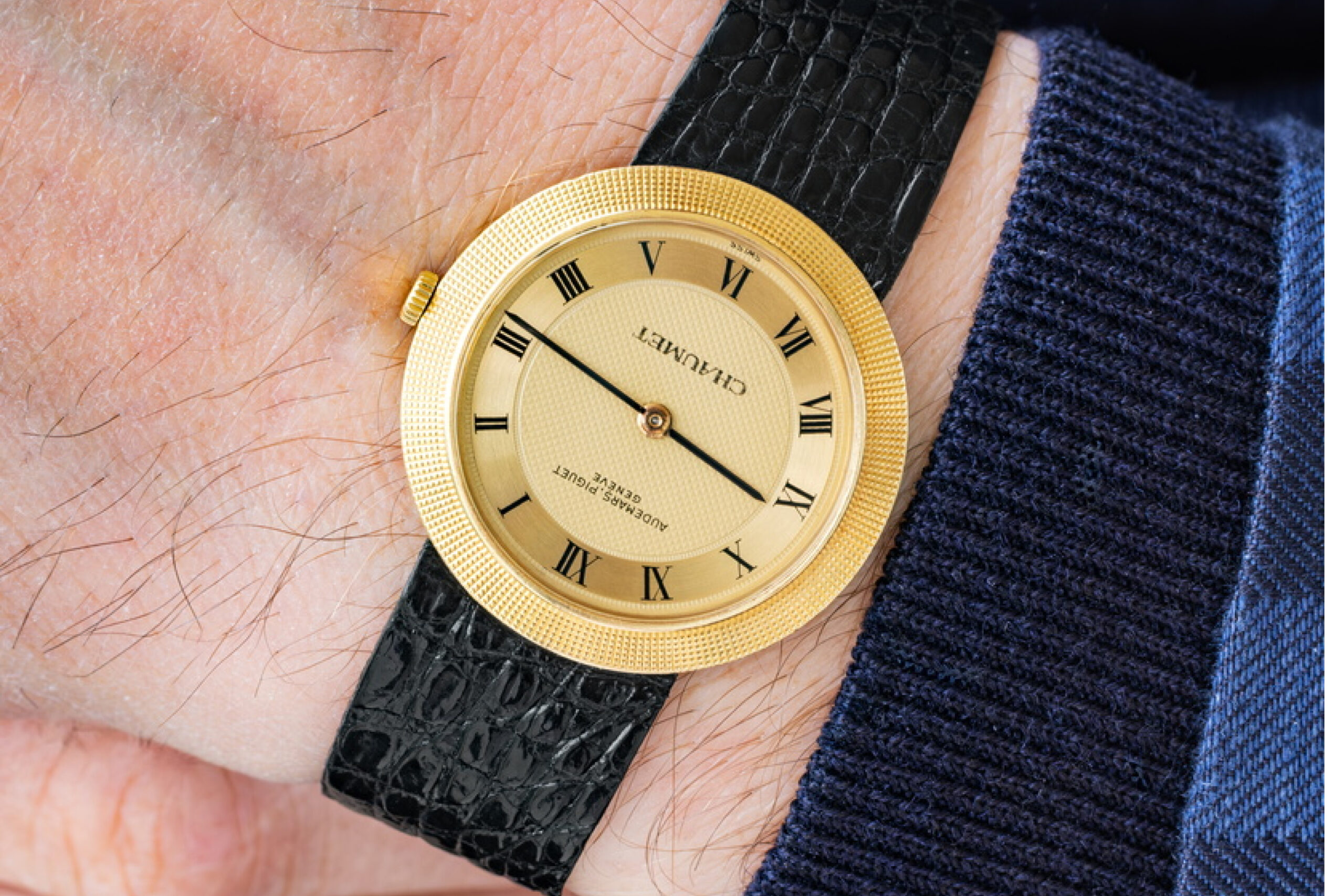
At Grygorian Gallery, we believe that collecting is an art form in itself. It is an act of curation, of discernment, of love. Our role is to guide you on this journey, to help you find the pieces that resonate with your story, your heritage, your dreams.
Whether you are drawn to the bold geometry of a vintage watch, the intricate filigree of handmade jewelry, or the luminous glow of a rare gemstone, we are here to help you build a collection that is uniquely yours—a legacy to be cherished and passed down through generations.
XI. Epilogue: The Timelessness of the Handmade
The Bohemian 1970s taught us that true beauty is not found in perfection, but in the handmade, the eclectic, the storied. It is found in the interplay of cultures, the dialogue between past and present, the alchemy of craft and imagination.
At Grygorian Gallery, we honor this lesson in everything we do. We invite you to join us—to become a collector, a storyteller, a guardian of heritage. Together, we can ensure that the spirit of the Bohemian 1970s endures, not as a relic of the past, but as a living, breathing source of inspiration for generations to come.
Discover the artistry, heritage, and exquisite jewelry of the Bohemian 1970s in our curated collections:
- Explore our catalogue of vintage watches and 1970s vintage jewelry to experience the legacy of horological artistry.
- Browse our vintage jewelry to find pieces that embody the eclectic spirit and handmade mastery of a golden era.

